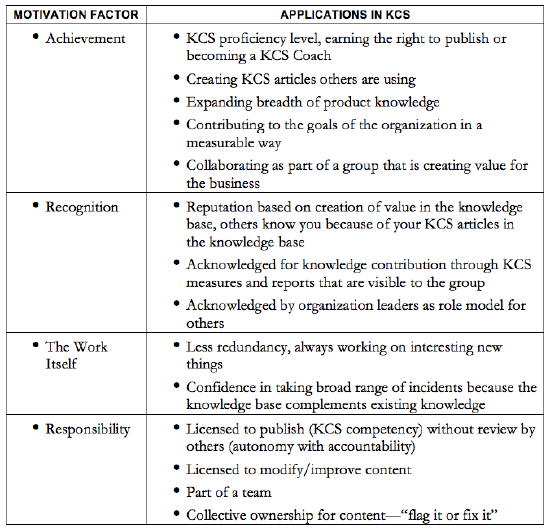Technique 8.5: Tap into Internal Motivators
Extensive research has been done in the area of motivating employees. The research shows that the factors that contribute to job dissatisfaction are different from those that create satisfaction and are motivating.
We like the insight in an article published by the Harvard Business Review, One More Time: How Do You Motivate Employees? by Frederick Herzberg. This is one of Harvard Business Review's most requested reprints. Another great reference on this is the book Drive: The Surprising Truth About What Motivates Us by Daniel Pink (this should be required reading for all managers in a KCS environment). Both resources provide compelling evidence that "sticks and carrots" don't work!
Herzberg identified hygiene factors, things that can be a distracter to employee motivation if they are not taken care of, and motivational factors, the things that are actually motivating. While hygiene factors include things like salary, work conditions, company policies, and relationships with co-workers, the four top motivation factors are achievement, recognition, the work itself, and responsibility. Let us consider how Herzberg's motivating factors show up in KCS.
Daniel Pink is a New York Times columnist with a lot of curiosity. One of the things he was curious about was what motivates people. In Drive, he synthesizes his extensive research on this topic in to three key points:
- Mastery
- Autonomy
- Purpose
These 3 factors are offered in the context of distinguishing physical tasks from intellectual work. Surprisingly when we are talking about intellectual work - like knowledge work - tangible rewards (like bonuses) are not effective. In fact they are disruptive. For a great animated summary of the book see his YouTube video.

